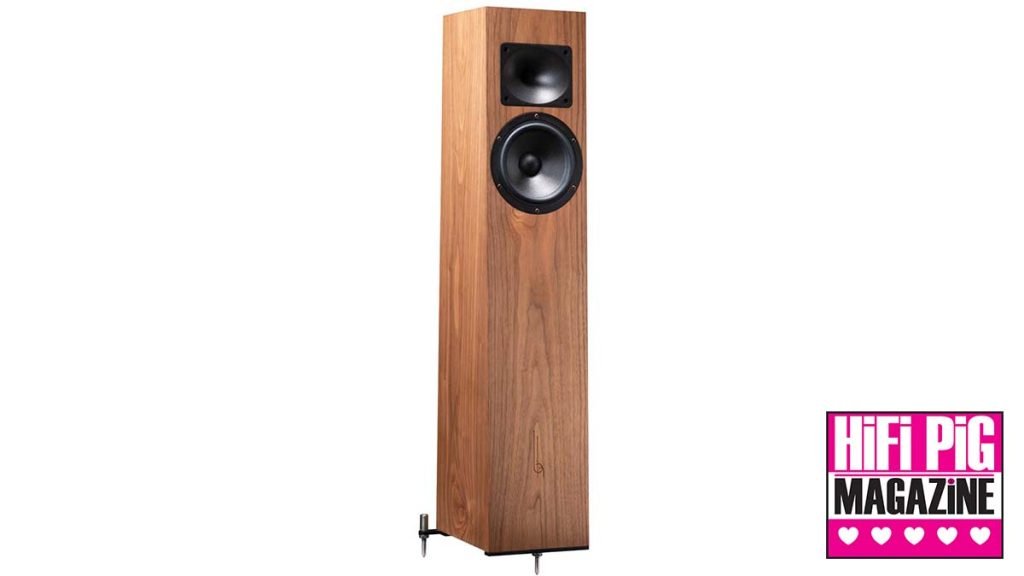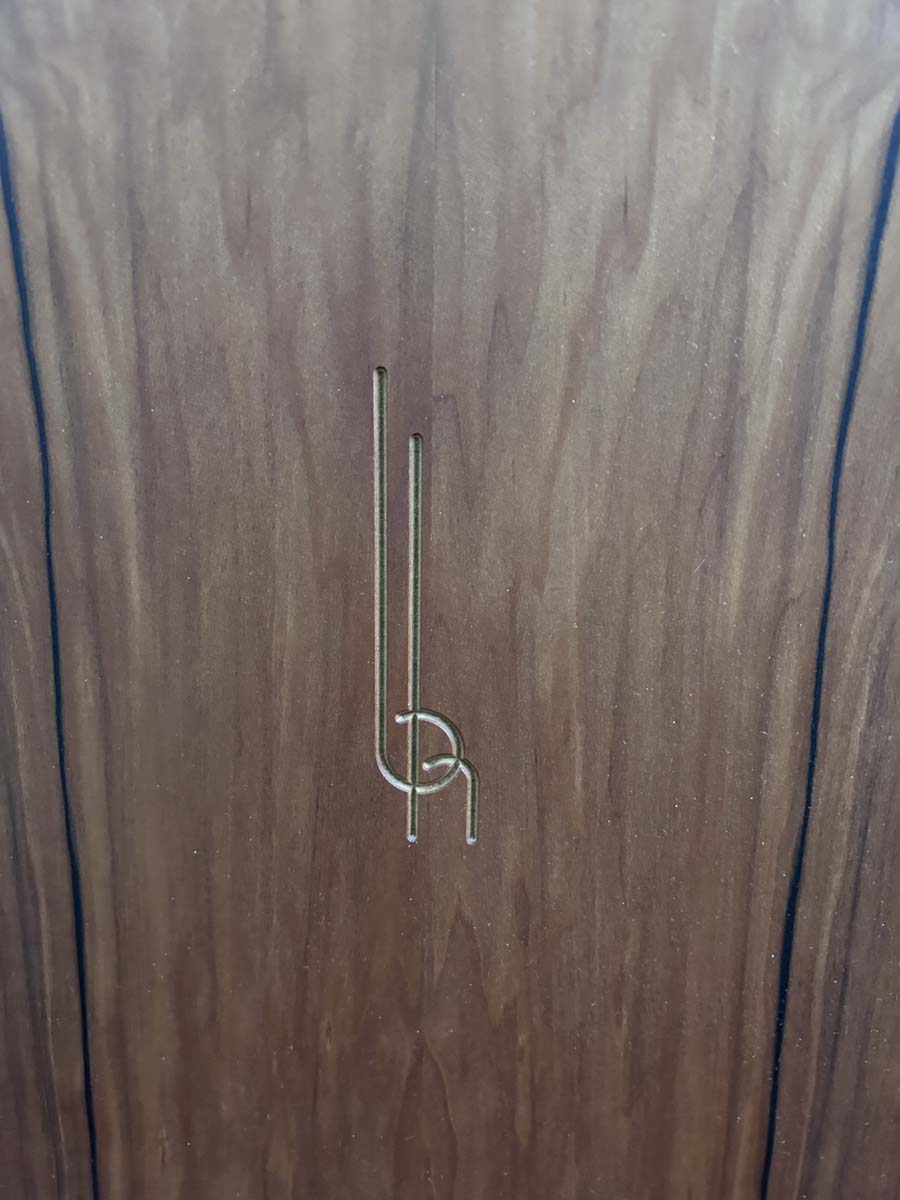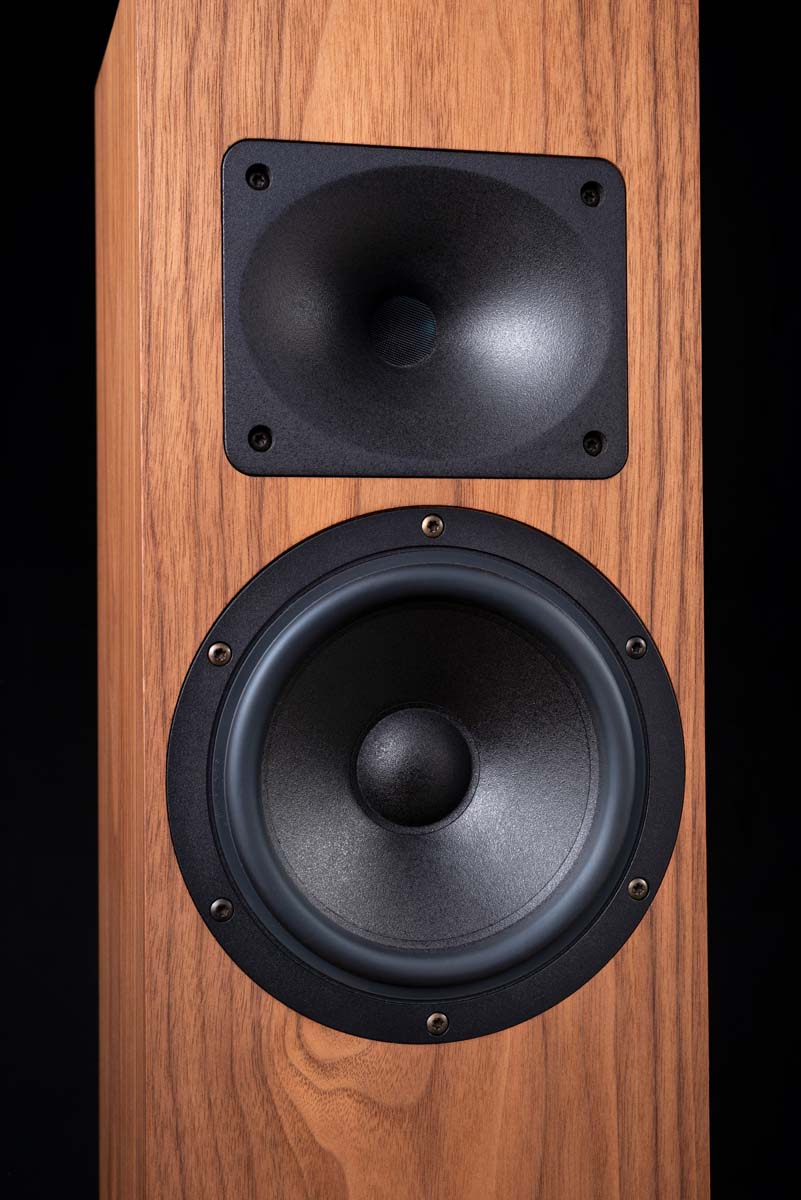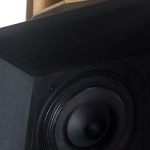BLUMENHOFER ACOUSTICS TEMPESTA 17 LOUDSPEAKERS REVIEW
Alan McIntosh has been on the hunt for a new pair of speakers and finally decides on the Blumenhofer Acoustics Tempesta 17 horns. In this review, he tells us why.
I’ve been keen to dip my toe into horn speakers for a few years, specifically since attending a North West Audio show at Cranage in the UK 5 years ago, and as my love of jazz and its incumbent analogue instrumentation developed so did my interest in this particular form of speakers. Part of it is the aesthetics (who isn’t wowed by massive horns like Avantgarde?) and partly by the method of reproduction of sound – horns for me have that crafted, artisanal “soul” in a way that I am drawn to. (I did recently get quite obsessed with procuring a pair of small batch Japanese backloaded horns, much to Stuart the editor’s mirth).
Fast forward to last month and an impending move to a new house (with a larger listening space) that led me to assess a number of floor standing speakers in a couple of local HiFi shops. For full transparency, I have purchased and now own the Blumenhofer Acoustic Tempesta 17s I am reviewing here so it’s going to focus on the build, technology, and reproduced sound more than “did I or didn’t I like them” (obviously, I do). Unusually for me I will briefly draw comparisons to other speakers I tested by way of a reference point for readers, but straight out the gate I remind folks that in my opinion at a certain level, you just don’t get “bad” HiFi (certainly I have not any in front of me) instead you will get equipment that in general terms will do exactly what it’s designed to do and will either suit your tastes or won’t – and while that can, for some, be boiled down to measured data, for others (including me) it’s about what grabs you and how well you perceive a piece of HiFi, in your own room, to represent music you know and love.
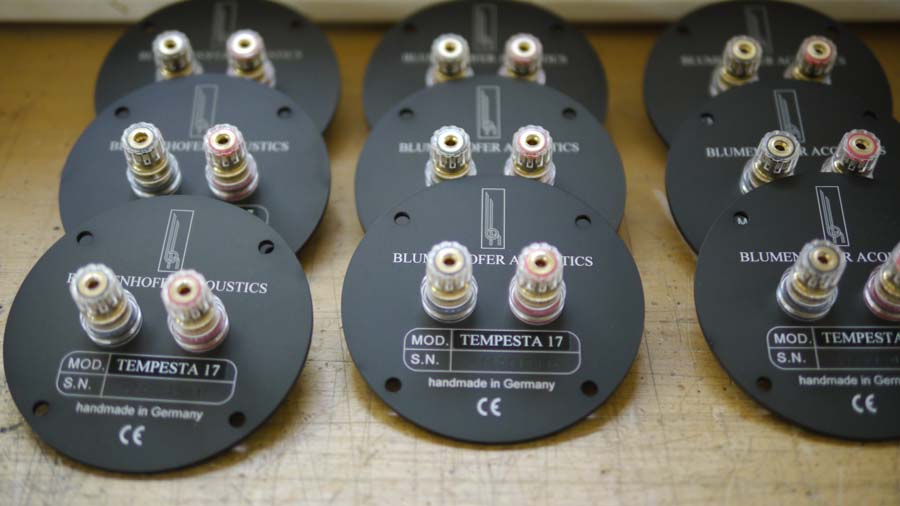
Quality parts are used throughout including the specially-made binding post plate
Thomas Blumenhofer the founder and lead of his namesake company, has been designing and making speakers for more than 40 years and continues to be heavily involved in design, direction, and final quality testing at their Munich site. Touring their website, particularly the “user manual” sections it’s fascinating to see that Thomas and his team have hand-drawn illustrations of positioning, how ports are shaped to affect pressure, how the bass reflex response can be tuned depending on the height of the speaker… and rear wall and so on. These very raw designer notes and transparent schematics bring us as listeners and owners that bit closer to the process, I feel. And that can only be a good thing.
BUILD AND FEATURES OF BLUMENHOFER TEMPESTA 17 LOUDSPEAKERS
The Tempesta 17’s stand at 1m tall (with spikes) and are a 2-way floor standing speaker with a floor ported bass reflex which Blumenhofer call a divergent bass reflex due to the aperture design. The face has a 6.5” /170mm woofer and a 1” compression driver inside a horn throat that flares to roughly 6”, and has a mylar membrane. Positioned just above the entry-level speaker in their range, the construction is of unbraced 19mm MDF with (in the case of mine) a walnut veneer, inscribed rather beautifully with the Blumenhofer motif. That woofer is a “sandwich” of 2 layers of a polymer called PEEK, manufactured by a company called Vitrex, with a layer of carbon between them, and is named a P2C Sandwich). The separately chambered crossover is set at 1800hz (low compared to many speakers that often favour a 3khz crossover) with the speaker on paper purporting to have a frequency response between 45hz and 20kz.
The actual form of the speaker is interesting in that rather than a simple vertically symmetrical “tower”, the front face is set at an angle, with the base widening slightly which I assume is to assist with bass response. Well-formed single-wired binding posts constructed of gold-plated Tellurium copper are set in the back. The Tempesta 17 is rated at 100w with a nominal impedance of 8ohm but is valve friendly at a 90db sensitivity, something Blumenhofer is focused on so much that they include impedance linearity controls in their upper-tier speakers.
Each speaker is set on 3 adjustable spikes, 2 in the rear and 1 in front – which makes positioning easy and for fine-tuning that bass reflex height to suit your room, should you need to. The listening axis can also be adjusted by adjusting just the 2 rear spikes to tilt the speaker. At 16kg a speaker, these are robust but not back-breaking heavy should you need to move them around.
HOW DO THEY SOUND?
I hadn’t expected to like these as much as I do. The Tempestas were the 4th-floor stander I listened to critically over 2 days after whittling my list down over time. They fitted the profile and were at the top end of an admittedly quite wide budget range. I initially listened to them in quite close proximity due to the store layout, then further back and also at home in my current listening room. What struck me about these varied listening modes was how unfussy the Tempestas appear to be on placement and yet still manage to retain the coherence of a single image. The second thing that was evident was how great the bass response was while maintaining an incredibly smooth tone right up through the spectrum, notwithstanding that closeness to the wall can accentuate that bass reflex response. I can usually sniff out a speaker’s broad credentials pretty fast by playing Princes Sign O’ the Times (2020 remaster, Qobuz) due to how high he had set the bassline and how much edgy activity there is in the upper registers. Some speakers can leave you lacking bass or can, when the volume is pushed become too forward and brittle at the top end, bordering on painful instead of having a smooth response throughout the range.
Even with the volume pushed north, the Blumenhofers remained smooth, detailed, precise, and airy, but not at all uncomfortable. With regard to bass on the Tempestas, it’s not gut-rumbling ultra-subsonic low, but it is got great heft, is organic, and is thumpingly tight enough to stop and start right where you’d hope without over bloat. It certainly “feels“ like they exceed the rated 45hz. For some reason, I hadn’t expected a relatively compact floor cabinet with horn/reflex design to have the weight and punch of bass these deliver and so was caught very off guard – in a good way! Blumenhofer’s diverging aperture design of their reflex port uses air pressure and flow rate calculations to achieve the response desired (higher pressure on exit)– which as mentioned, can be tuned further by lowering/raising the speaker on its spikes, so it seems they know their maths and how to turn it into great bass.
Moving through my digital test track list, next up was The Vanishing of Peter Strong by Yello (24bit/48khz) which only confirmed the bass capability and also highlighted the detail and stop/start control in percussion and upper tones. Jarre’s wonderfully pumping Arpeggiateur was delivered crisply and with well-defined bass, great tempo, and scale that some speakers can fall a little short at. In Blumenhofer’s documentation, they mention that the Tempesta range works equally as well as a cinema experience speaker as it does for pure music listening and I can only attribute that to the bass and well-timed dynamic response they have achieved. Tanya by Dexter Gordon (2015 remaster, 24/192) allowed me to test successfully the 17’s handling of Jazz – the honest and organic response of the horns just works incredibly well for jazz brass, as it did for very dynamic rock in the guise of Journey’s Separate Ways (Worlds Apart), specifically the staggeringly powerful Bryce Miller/Alloy Tracks remix. (24bit/48khz)
Using open-reel tape as a source across a number of master copy albums further confirmed how well the Tempestas open the door to a captivating presentation and honest sound. Throughout testing, the coherent image, forming one wide soundstage was very impressive, more so than some of the others I’d tested earlier in the week. By this point, the highly proficient Audiovector QR5s I had also listened to the day before had been pipped to the post by the Tempestas. It was close though, I have to say, with the Tempesta’s offering just a bit more of what each had to offer. The Audioverstors while very solid in the bass and very resolving overall were a little dry for me, whereas the Tempesta offered more realism to my ears. Versus the Totem Bison Twin Towers that I’d also listened to that week which to me were a little forward and sharp at times, the Blumenhofers offered a much smoother top end, while the Bisons did pretty much match the Tempesta’s for soundstage.
I compared the same playlist across three quite different amps, the Atoll SDA 200 Signature (in-store) and both my Hegel 190 and Prima Luna Prologue 1 at home. None produced anything but super results, the Brimar 6L6GC valves in the Prima Luna had no trouble driving these at scale but also with dimensionality to the sonic image, did expand the bass somewhat and added gravitas across the board as you might expect, whilst the Hegel’s class-leading grip and Scandi neutrality allowed them to deliver vibrant clarity and pace in spades, while not over voicing into sharpness.
CONCLUSION
Obviously, my conclusion was summed up as soon as I opened my wallet and drove them home, but over the last couple of weeks that’s only been further confirmed. These are very, very good speakers. Be it electronic, acoustic, jazz, or dynamic rock the combination of the horn-throated compression driver and the bass reflex design, paired with a very well-implemented 6.5” woofer just serves up sound very, very well and with no clear weakness at any point on the frequency curve. There is precision and clarity, a coherent dimensionality, and believability to these speakers. Positioning them isn’t a fussy affair, but spend the minutes to get it just right and they fall away behind the music, avoiding colouration or over-voicing, but never veering into sterility.
At this price point, you are getting a lot of high-quality speaker for your money.
AT A GLANCE
Build Quality:
Lovely craftsmanship, port and horn design, and good materials are evident both visually and sonically
The finish is lovely and they are quite a statement to look at
Even the spikes are robustly put together and well thought out
Sound Quality:
Impactful, deep, and tuneable bass with incredible transparency and dynamic, 3-dimensional, honest reproduction in the mid and higher registers without fatiguing or straining
Value For Money:
Combining materials, design, and capability across the board the price point is sound
We Loved:
The musical engagement all around, unexpectedly powerful bass, smooth mid/highs even when pushed, aesthetics, imaging, easy pairing and efficiency.
We Didn’t Love So Much:
Absolutely nothing at this price.
Elevator Pitch Review: If you are seeking a carefully and competently designed, natural, transparent, immersive, and highly engaging loudspeaker that delivers across the board, isn’t fussy about solid state or valve amplification and your budget is around £5000 then these should be near the top of your must-hear list.
Price: Current MSRP of £5250/pair in the UK for the standard, Walnut, or Cherry veneer (other options coming soon I believe)

Alan McIntosh
BOUGHT FROM AUDIOPHILIA IN EDINBURGH
SPECIFICATION
Material: MDF
Thickness: 19mm / 0,75″
Crossover chamber: Yes
Frequency range: 45Hz – 20kHz ± 2dB
Bass Cabinet: Divergent, Bass reflex
Porting: Floor
Woofer: 170mm / 6,5″
Material: Peek-Carbon P2C® Sandwich
Crossover frequency: 1800 Hz
Midhigh: Compression driver
Horn Throat: 1″
Membrane dimensions: 35mm / 1,4″Mylar
Max power input (RMS): 100 W RMS
Efficiency: 90 dB
Impedance: 8 Ohm
Terminal: Single-Wiring
Material: Gold-plated tellurium copper
Dimensions: 950 x 270 x 248 mm / 37,5 x 10,5 x 9,75 in
Weight: 16 kg
Review equipment: Atoll SDA 200 Signature (in-store), Hegel 190 and Prima Luna Prologue 1 amplification, WyWire Blue speaker cable. Sources were Tascam 32 Openreel, digital (Qobuz+Roon) across the Atoll, and Hegel 190. Audioquest Yukon interconnects. Quadraspire racking.
















































